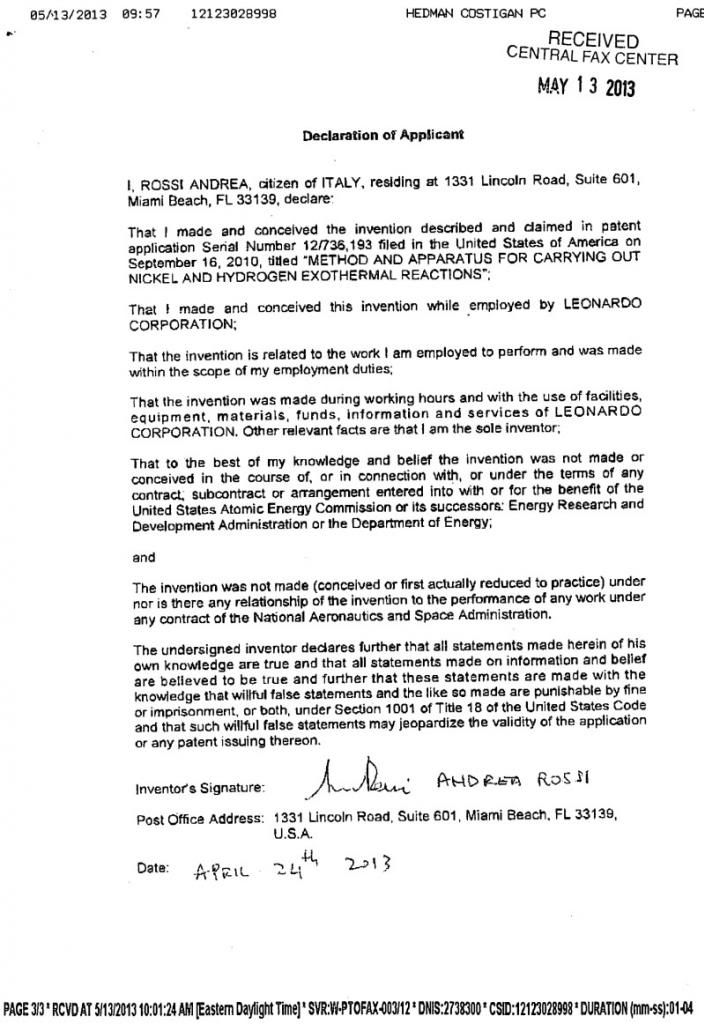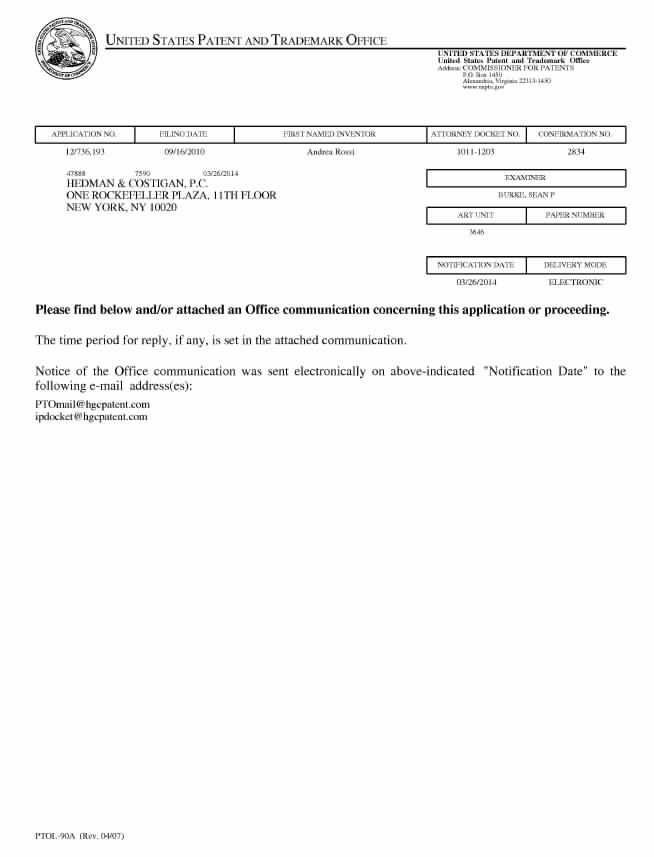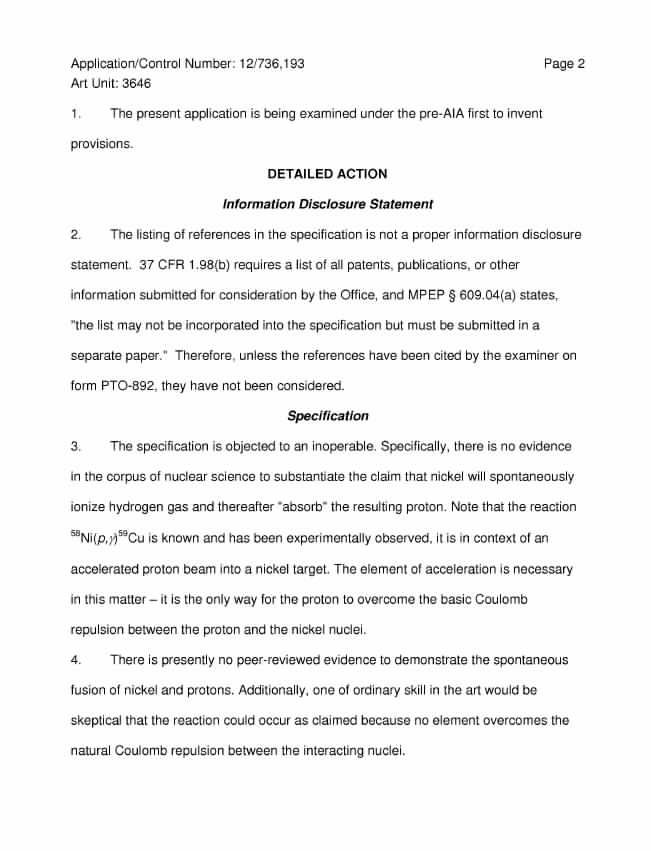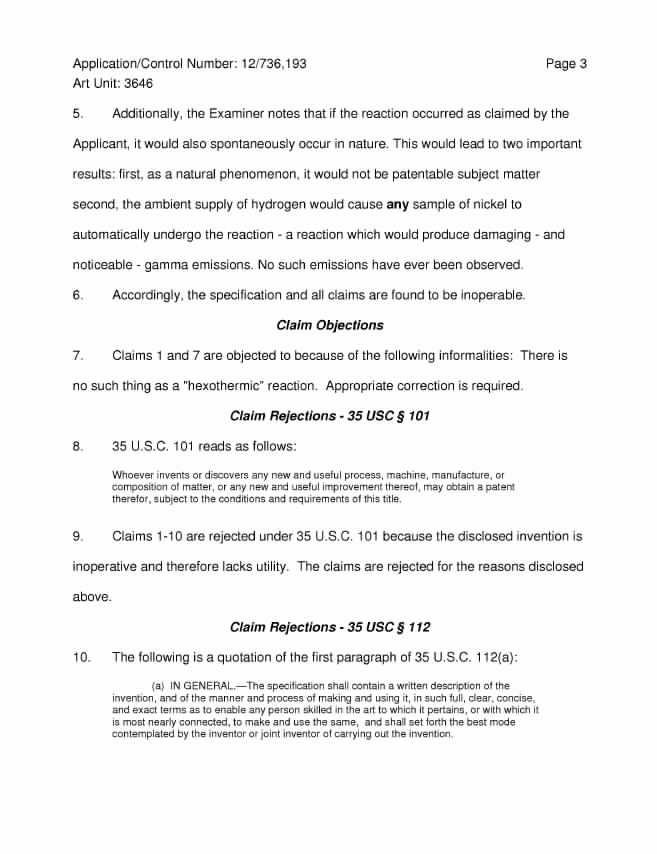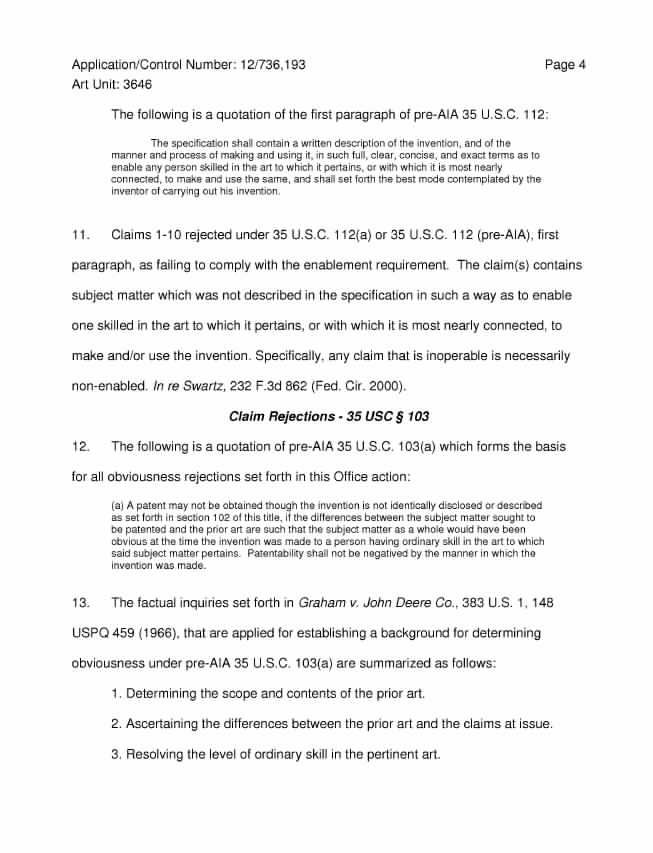Re: Rossi USPTO patent progress.
Posted: Sat Apr 13, 2013 7:06 pm
This is called 'enablement' in the USPTO's (and most english speaking IPO's) lingo.hanelyp wrote:The way patents are supposed to work, a standard apparently not well upheld these days, the patent application must include sufficient detail for a practitioner of the art to implement.
If a patent application is rejected for lack of enablement and the decision is appealed, the USPTO can allow/request for a practical demonstration. Apparently they have done this on occasions. There don't appear to be any records showing to which applications this has been applied, or whether any were ever pursued and had a successful outcome.
Not exactly. There used to be a requirement in the US that a patent had to be accompanied by some form of physical model demonstrating the patent. This was dropped in 1880's by USPTO, in actual fact for the simple reason that the USPTO got fed up with receiving so many models!! Some inventors carried on sending in models well into the 20th century, but it was not required.hanelyp wrote:There also used to be a requirement that the claimed invention had actually been implemented.
This is called 'reduction to practice' and does not appear to have ever been an actual requirement, only that sufficient evidence exists, based on logical arguments founded on current established knowledge, that a reduction to practice is practical.
In some jurisdictions, there is a requirement for reduction to practice for an issued patent to continue to be in force. Italy appears to be one such country. So, for example, for Rossi's Italian patent (the only on he has for his nickel tube thing) his application would have received a very cursory examination and then granted, but the flip-side of that is that he has two years to start selling a working product else he may lose his patent rights. This seems like a pretty good system, actually, because it combines a fairly liberal and easy-to-get-hold-of patent, but at the same time forces the inventor not to sit on the idea and wait for someone else to do the hard work and then sue them retrospectively, for example. The probability of Rossi holding on to an enforceable Italian patent for more than a few more months is therefore somewhere between zero and very very slim, all things considered so far.
There is also another requirement with the effect that a patent need not be fully enabled providing it, evidently, does not need an 'excess' of experimentation to get it going. Anything that requires 'undue experimentation' is not permitted. Patents are, obviously, expected to be at the cutting edge of their field so some device that needs intensive and meticulous tweaking can still be patented, even if it is obvious that it's not wholly practicable until improvements in not needing so much tweaking is found, but it's still OK as a patent as it is, essentially albeit problematically, enabled.
Most patents, like this Rossi thing and the other one mentioned here lack something else that is needed to be a meritable patent. They are also 'inspecific'. It's easy to spot, and will always fail a patent. Something like 'powder in a long tube'. The examiner will immediately ask 'how long'? Or 'this will get very hot'. Stuff like that is a flat fail.
One can bet good money that these types of patent applications almost always end up rejected for lacking enablement, requiring undue experimentation and being inspecific.
One other thing that affects patent applications in fusion at the moment is practicability. A patent must be 'practicable' and show a 'utility'. A patent application for a device that merely 'does fusion' would not actually be patentable. It would have to show how that process produces something useful, usually heat or neutrons. General Fusion's patents have been failing on 'utility' recently because the USPTO has argued that compressing a magnetic plasma achieves nothing useful (as there is no evidence to suppose it will produce useful excess heat, for example). That being said, a recent appeal was successful against examiners rejections on the basis of a lack of utility in relation to a "3He fusion device with direct electrical conversion". The Board of Appeals essentially ruled that a fusion device built for a research purpose alone had a utility, namely fusion research. Research is a utility for research? hmmm... maybe the Board of Appeals didn't get that right, but still it means fusion related patents are less likely to be rejected on 'utility' now.
(One might suppose that 'Research' itself is now regarded as an 'end' rather than a 'means'. It is not unexpected - gravy trains serve their own purposes.)

